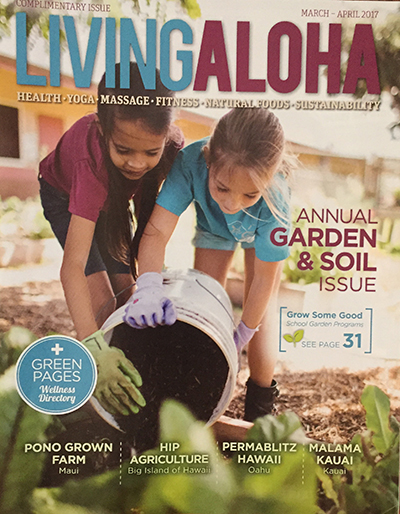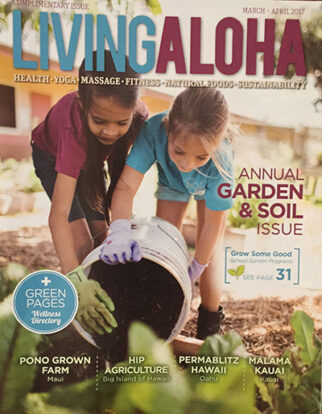For Sustainability, Attitude is Everything
Sustainability is not a new or radical concept. Throughout human history indigenous humans have realized that we need to respect; and replace what we take and align ourselves with Nature’s built-in ability to maintain balance. Human use shifted dramatically as the industrial revolution gave us new technologies and new machines that allowed us to extract and process minerals and oil in new ways and produce amazing new products, in massive quantities. The Industrial attitude was that if a resource is available anywhere in the world, whoever could take it had the right to take it. “Industrialists” began clear-cutting virgin forests, over- fishing our oceans, and mining at unprecedented rates, while consumers eagerly gobbled up whatever they produced. It became normal to value profit, progress, and products of industry, without regard to their environmental and human consequences.
 Now we know that that attitude and the practices it spawned have side effects, we have to shift again to a wiser, sustainable way of interacting with – everything. An important question for each of us to ask is: “How much does that entitled attitude still justify how I buy and consume today?” We love our conveniences and our opulent way of life. We love our cars, fast food, and cheap, plastic “goods.” But we are learning that our concept of “disposable” is misguided: unless Nature can break down a thing into harmless components, “throwing it away” means that we’ve simply moved our toxic waste to a different part of our neighborhood, i.e. planet earth. Clean water, clean air, and balanced ecosystems are critical factors in the overall cost-benefit equation of any product or process. But how do we redesign the wasteful practices and products we have come to depend on?
Now we know that that attitude and the practices it spawned have side effects, we have to shift again to a wiser, sustainable way of interacting with – everything. An important question for each of us to ask is: “How much does that entitled attitude still justify how I buy and consume today?” We love our conveniences and our opulent way of life. We love our cars, fast food, and cheap, plastic “goods.” But we are learning that our concept of “disposable” is misguided: unless Nature can break down a thing into harmless components, “throwing it away” means that we’ve simply moved our toxic waste to a different part of our neighborhood, i.e. planet earth. Clean water, clean air, and balanced ecosystems are critical factors in the overall cost-benefit equation of any product or process. But how do we redesign the wasteful practices and products we have come to depend on?
Attitude Shift rather than Overwhelm
Each of us can (and must) make our own adjustments that will add up to turn the tide of overconsumption and me-only thinking. Rather than get overwhelmed by it all, I can adjust my attitude and look long-term to make some changes each day. I can save and reuse plastic utensils. Better yet, I can get a reusable spork and forego single-use plastic altogether. I can stop buying water in single-serving plastic bottles, ever. It costs $4,000 to recycle 1 ton of plastic bags (more for plastic bottles or take- out containers) and the resulting product sells on the commodities market for $32.1 That’s not sustainable.
How do I recalibrate my use and expectations?
- Reprioritize by valuing my connection to this earth and every being on it over my own immediate convenience.
- Make taking personal responsibility for what I consume more cool than always having the latest thing.
- Shift my definitions of “progress” and “abundance” to include natural bounty and planetary balance.
- Support this new attitude with action.
- Start with small steps and build on them, e.g. bring my own reusable containers so I don’t use styrofoam or one-use plastic.
I need to rethink my entire relationship with – everything. Everything I do has some positive or negative impact on something or someone else. I can buy food grown nearby and local products made well, out of natural materials – rather than plastic – whenever possible. I can read labels and choose wisely. The shampoo (paint remover, or oven cleaner) bottle won’t say, “made in a water-polluting factory that underpays its employees, using chemicals whose long-term use will ruin your health and that of our planet” – but I know the score. I can vote with my dollar for products that do not harm the ecosystem. I can get big-picture information from documentaries such as Fuel, Who Killed the Electric Car?, The Corporation, and We the People and discuss their ideas with my friends and family.
Let Nature Guide You
The line between enough and too much is a moving target but Nature always shows us the way. Choosing to eat clean foods according to seasonal availability connects us to the earth’s natural rhythms. Ask: Does Nature give us this food here, now? If not, it may not be the best choice to buy it. We can rethink “convenience” and factor in the nutritional and connective benefits of cooking from scratch. What are we “saving” our time for, anyway?
As we look at our bio-footprint, we can ask ourselves:
- Am I taking small steps to reduce my plastic consumption, use less electricity and fossil fuel, and switch to renewable materials in what I use?
- What adjustments do I need to make next week to better balance myself and my place in my various ecosystems?”
- What do the details of sustainability look like? For me, personally? For my family? My community? For my country? My planet? Improvement happens gradually, over time. Shifting from ignoring consequences and over-consumption to big-picture, sustainable balance will require a perspective adjustment from each of us. It took 150 years of heavy production and consumption to get to this point. It will take a few more years to turn the tide. But we can do it. We actually need a lot less than we’re accustomed to consuming. We can use new technologies to clean up the messes we’ve made and invent new ways to use natural resources in a balanced, wise way. Using just enough ultimately feels the best. It will take seeing through a new lens to see what that looks like. As we shift our priorities from profit and convenience to renewable and good-for-everything, we will create cleaner production methods, new bio-degradable materials, and greener, sustainable business practices. As we put our hearts and minds together on this, we will collectively learn to live in sustainable balance with each other and our earth
*** This article first appeared in Living Aloha Magazine, March/April 2017. www.livingaloha.net

